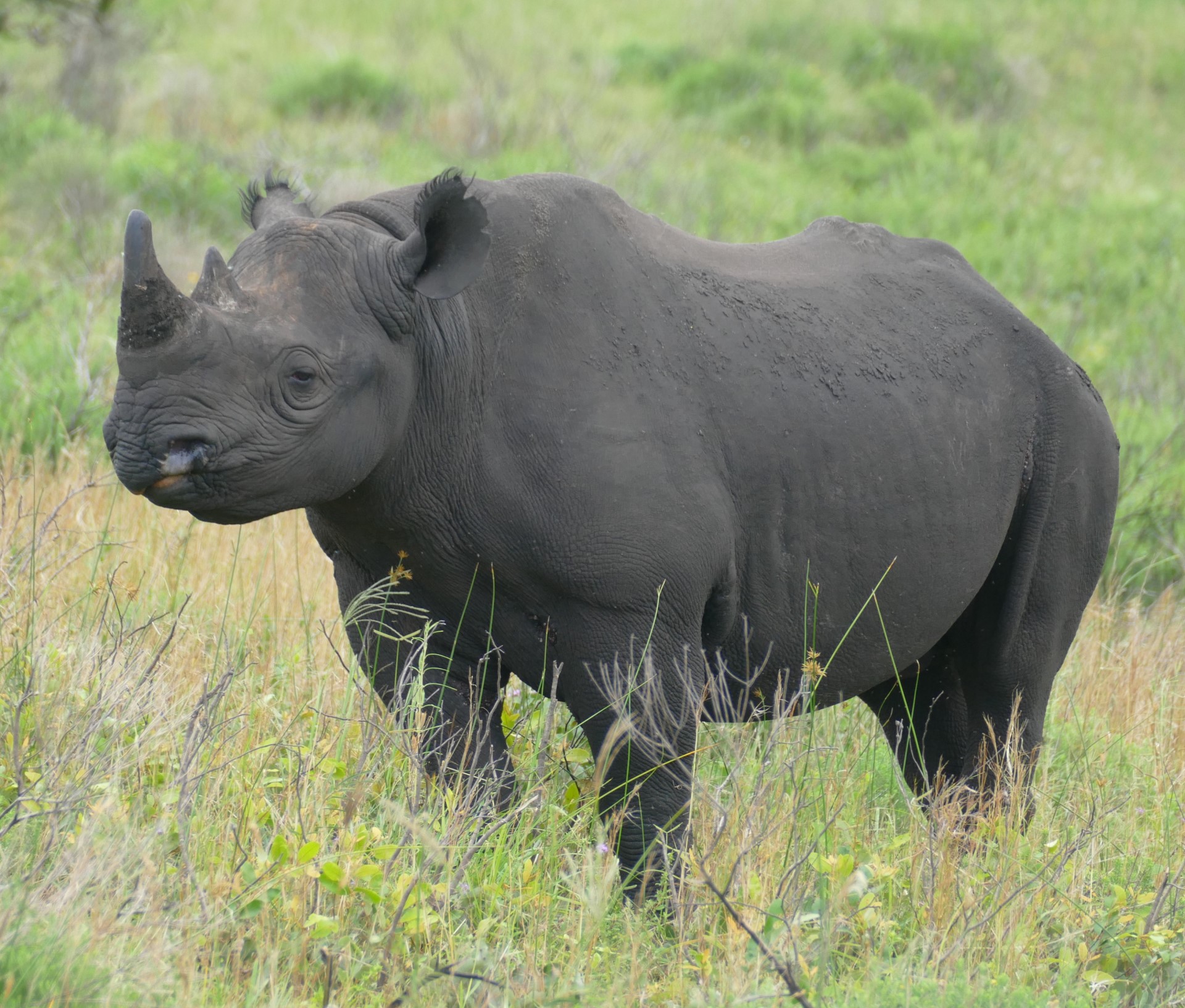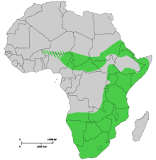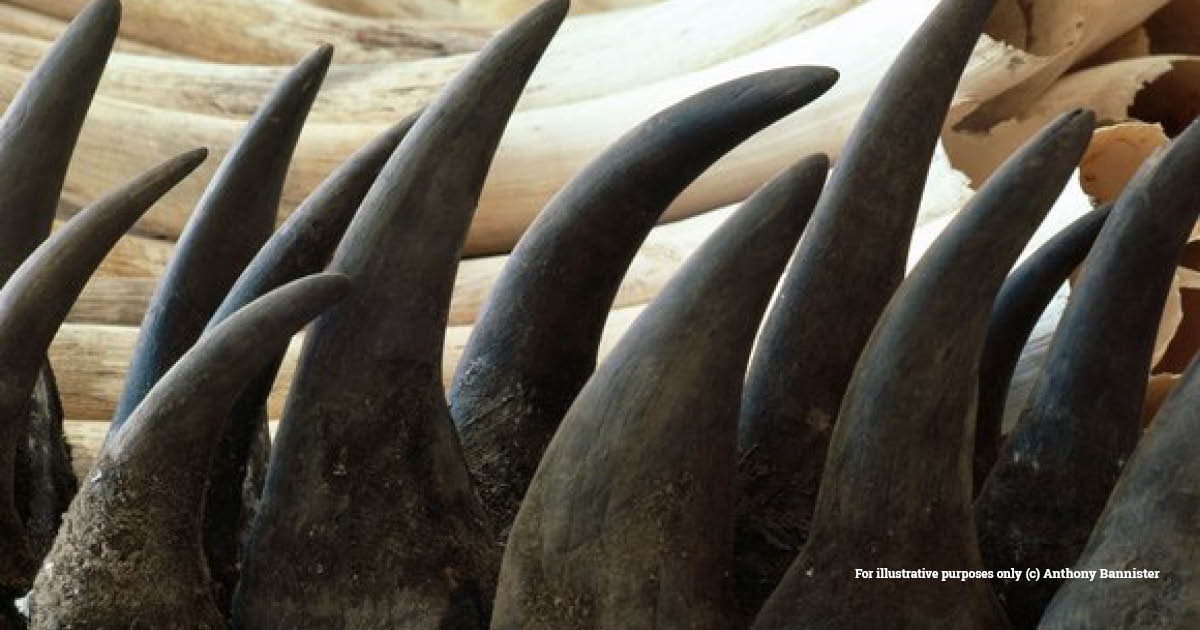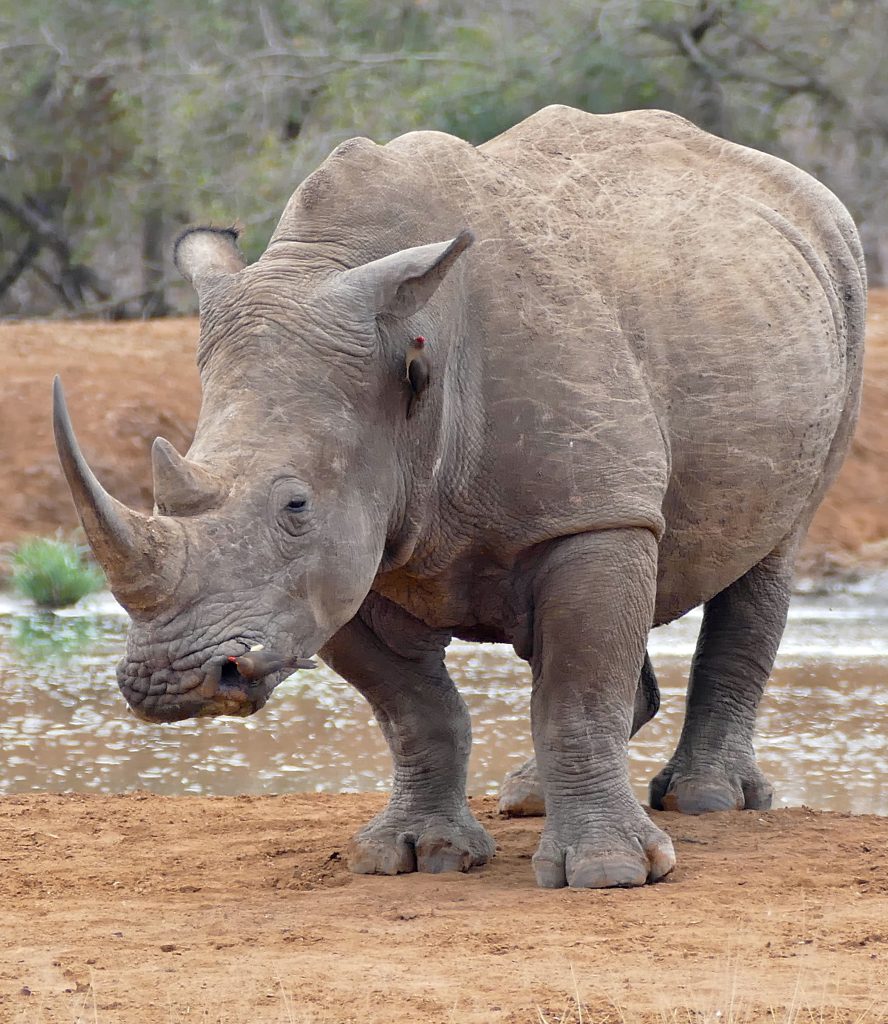Much of the news from the Natural World is negative. The human population is growing in crowding out the Natural World, even when not foolish two positions have led close...

Black Rhino
 So the black rhino is one of the two rhino species that survive in Africa. Their last common ancestor was around 6 million years ago (in comparison the Javan and Indian rhino split just 2 million years ago). Being browsers, not grazers, they are far harder to see, as they spend their time deep in the bush, far from the open plains where white rhino are discovered.
So the black rhino is one of the two rhino species that survive in Africa. Their last common ancestor was around 6 million years ago (in comparison the Javan and Indian rhino split just 2 million years ago). Being browsers, not grazers, they are far harder to see, as they spend their time deep in the bush, far from the open plains where white rhino are discovered.
Being solitary, they are also generally found at far lower densities than white rhinos. having said this, in many reserves this is as much as a result of poaching as of a low natural density. Having spent some time based around the Kruger, we have encountered White rhino a huge number of times, but black rhino have eluded us, though their dropping have been encountered on a few occasions.
The black rhino is a younger species than the white rhino having evolved from it, 4-5 million years ago.
They both have 2 horns, made of keratin, the same as our fingernails, with the front one being longer than the back one. The front horn has an average length of 50cm, though this is not a set thing. Plenty of black rhino have been measured with a horn 135cm long, and the world record was a horn 150cm long.
Regions of their range have been lost at various times, though in recent times, there has been an effort to turn back time In May 2017, 18 eastern black rhinos were translocated from South Africa to the Akagera National Park in Rwanda. The park had around 50 rhinos in the 1970s but had lost them all by 2007. In September 2017 18 were reintroduced, and 1 has been born since. The park employs a team to protect the rhinos and so far this has worked. In October 2017, This transfer took place in 2018. The governments of Chad and South Africa reached an agreement in October 2017, to transfer six black rhinos from South Africa to Zakouma National Park in Chad; this was complete by May 2018. Once established, this will be the northernmost population of the species. The species was wiped out from Chad in the 1970s and is under severe pressure from poaching in South Africa. The agreement calls for South African experts to assess the habitat, local management capabilities, security and the infrastructure before the transfer can take place.
Historically there have been a wide range of subspecies suggested for this species: The most accepted position considers seven or eight subspecies, of which three became extinct in historical times and one is on the brink of extinction. I have listed all these below
- Southern black rhinoceros also known as Cape black rhinoceros (D. b. bicornis) – Extinct. Once abundant from the Cape of Good Hope to Transvaal, South Africa and probably into the south of Namibia, this was the largest subspecies. It became extinct due to excessive hunting and habitat destruction around 1850.
- North-eastern black rhinoceros (D. b. brucii) – Extinct. Formerly central Sudan, Eritrea, northern and south-eastern Ethiopia, Djibouti and northern and south-eastern Somalia. Relict populations in northern Somalia vanished during the early 20th century.
- Western black rhinoceros (D. b. longipes) – Extinct. Once lived in South Sudan, northern Central African Republic, southern Chad, northern Cameroon, north-eastern Nigeria and south-eastern Niger. The range possibly stretched west to the Niger River in western Niger, though this is unconfirmed. The evidence from Liberia and Burkina Faso mainly rests upon the existence of indigenous names for the rhinoceros. A far greater former range in West Africa as proposed earlier is doubted by a 2004 study. The last known wild specimens lived in northern Cameroon. In 2006 an intensive survey across its putative range in Cameroon failed to locate any, leading to fears that it was extinct in the wild. On 10 November 2011 the IUCN declared the western black rhinoceros extinct.
- Chobe black rhinoceros (D. b. chobiensis) – A local subspecies restricted to the Chobe Valley in southeastern Angola, Namibia (Zambezi Region) and northern Botswana. Nearly extinct, possibly only one surviving specimen in Botswana.
- Uganda black rhinoceros (D. b. ladoensis) – Former distribution from South Sudan, across Uganda into western Kenya and south-westernmost Ethiopia. Black rhinos are considered extinct across most of this area and its conservational status is unclear. Probably surviving in Kenyan reserves.
- Eastern black rhinoceros (D. b. michaeli) – Had a historical distribution from South Sudan, Uganda, Ethiopia, down through Kenya into north-central Tanzania. Today, its range is limited primarily to Kenya and Tanzania.
- South-central black rhinoceros (D. b. minor) – Most widely distributed subspecies, characterised by a compact body, proportionally large head and prominent skin-folds. Ranged from north-eastern South Africa (KwaZulu-Natal) to north-eastern Tanzania and south-eastern Kenya. Preserved in reserves throughout most of its former range but probably extinct in eastern Angola, southern Democratic Republic of Congo and possibly Mozambique. Extinct but reintroduced in Malawi, Botswana, and Zambia. It also ranges in parts of Namibia and inhabit national parks in South Africa.
- South-western black rhinoceros (D. b. occidentalis) – A small subspecies, adapted to survival in desert and semi-desert conditions. Originally distributed in north-western Namibia and southwestern Angola, today restricted to wildlife reserves in Namibia with sporadic sightings in Angola. These populations are often referred to D. b. bicornis or D. b. minor, but some experts consider them a subspecies in their own right.
The most widely adopted alternative scheme only recognizes five subspecies or “eco-types”: D. b. bicornis, D. b. brucii, D. b. longipes, D. b. michaeli, and D. b. minor. This concept is also used by the IUCN, listing three surviving subspecies and recognizing D. b. brucii and D. b. longipes as extinct. The most important difference to the above scheme is the inclusion of the extant southwestern subspecies from Namibia in D. b. bicornis instead of in its own subspecies, whereupon the nominal subspecies is considered extant.
Seeing Black rhino is hard, but they are in most African reserves that we list
Should South Africa burn its rhino horn stockpiles?
- Tim
- July 3, 2024

To see the whole tweet click here
The South...
So you think that only the poster child of climate change – the polar bear, is threatened by the changing climate? Think again – now rhino?
- Tim
- June 12, 2024

Rhino are unable to sweat, which means that as temperatures increase, both black and white rhino are more and more reliant on finding shade, in order to keep...
The Indonesian rhinos that once roamed across much of Asia
- Tim
- April 30, 2023
The wildlife of Indonesia now often looks like relatively unique to those islands. This is not the natural state of affairs. 60,000 years ago, a cousin of the orangutan lived...
Rhino poaching in the Kruger continues, decimating the population
- Tim
- October 19, 2021
When my wife and I spent 3 months on the edge of the Kruger in 2007, there was thought to be over 10,000 white rhino left in the park -...
The rise of rhino poaching within South Africa
- Tim
- April 2, 2018
One of the four remaining viable west African Lion habitat has been badly treated but perhaps it is now on the mend.
- Tim
- May 22, 2022
West African lions are heavily endangered with just 400 members remaining. While the west African population of the Asiatic lion is less at risk than the Gir forest population -...
Species watch
- Tim
- May 11, 2022
I am intending to make this into a new set of articles that will appear on this website. Obviously, these species will not be the only ones that are covered...
Elephant counting from space
- Tim
- February 4, 2021
Are we allowing the silent extinction of giraffes
- Tim
- November 13, 2020
Giraffe survival is in danger: according to the giraffe conservation Foundation giraffe numbers have fallen from 140000 and 80000 in the last 20-years. Yet other organisations suggest that the current...
An amazing photograph: leopard with a living shadow
- Tim
- October 19, 2020
Review of Kruger National Park
- Tim
- January 6, 2018
- Size [usr 4.5]
- Facilities [usr 5]
- Range of animals [usr 5]
- Road quality [usr 4.5]
- Wildness [usr 3.5]
In Africa the big 5 is famous, what is the UK’s equivalent
- Tim
- August 31, 2020
Apart from b the big 5 and ecotourism big 7 there are a whole host of 5s that have been invented-some are relatively easy, others almost impossible
Big 5: lion...
Ivory banned
- Tim
- April 7, 2018
